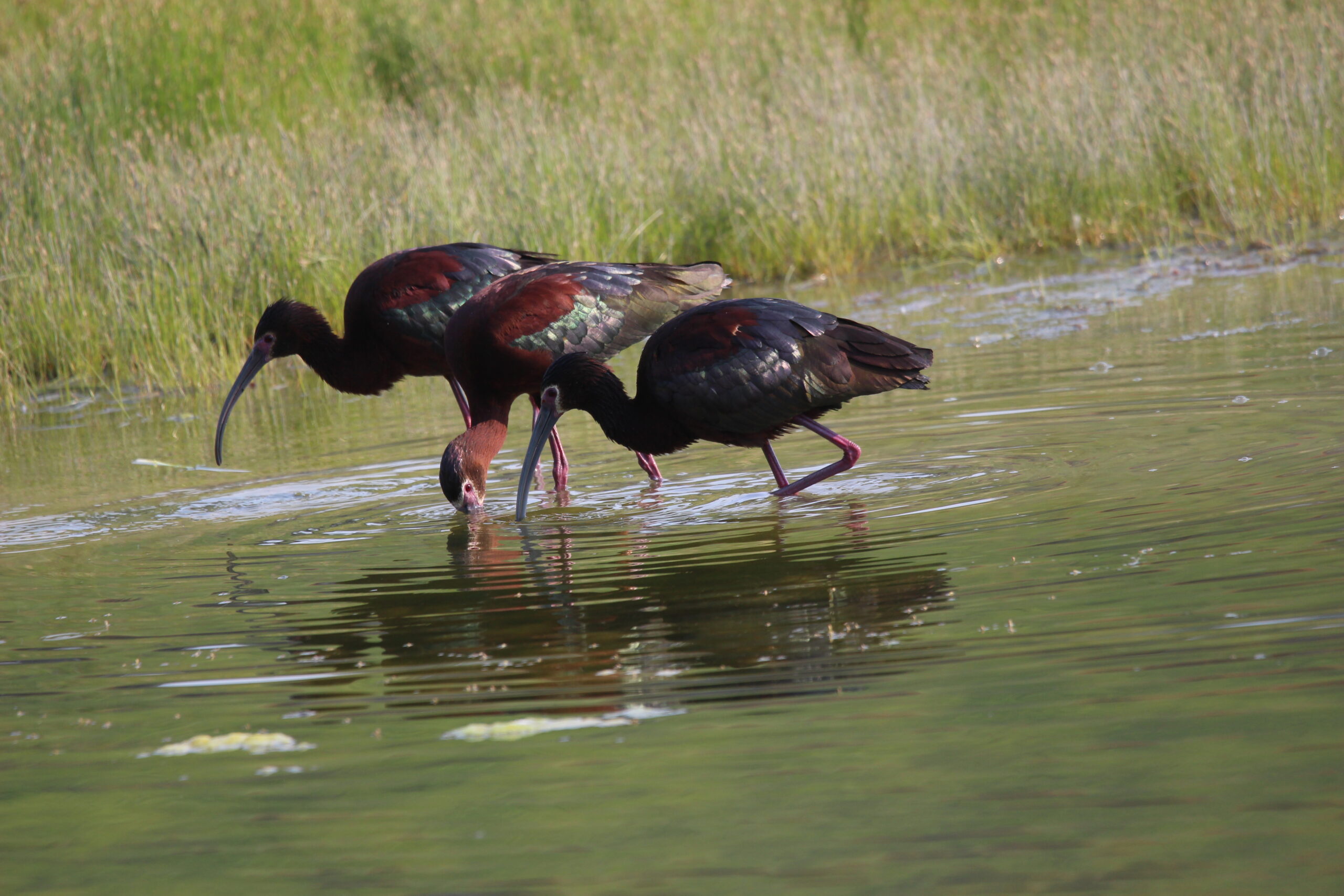As I went out the door on my way to work this morning, I caught a glimpse of a cedar waxwing in a mountain ash tree by my driveway. Success! After setting food out for these elusive beauties for the past month and a half, finally I saw one in my yard!
Bird watching – the term really drums up all sorts of images. On the one hand, it sounds so passive, and evokes comical thoughts of octogenarians executing bad park jobs along busy thoroughfares, armed with canteens, uncomfortable camp seats, and a penchant for sleeping while “watching.” On the other hand, the moniker makes you think of somewhat geeky “pseudo” scientists roaming the countryside in khakis and cargo vests, with camera, binoculars, and notebook in hand, all the while looking for the biggest count and rarest birds ever seen (and indeed, the movie The Big Year starring Steve Martin, Jack Black, and Owen Wilson centers around this stereotypical view.) Well, the truth of the matter is that bird watching, or simply birding, is so much more than either of these hackneyed definitions. Encompassing science, technology, nature, and art, birding is a fascinating and fun pursuit.
Science and Technology – Most birding in our area centers around migratory birds. A somewhat unknown, or at least under-known, fact, is that the vast majority of birds that we see in our area do not stay for the entire year; rather they migrate. Some, such as the red winged black bird, use our area as a summer home. Others, such as the snowy owl, use our area as a winter home. Others yet, such as the bald eagle, use our area as a stop along the way to and from their winter and summer homes. Scientifically – specifically biologically – speaking, this is of enormous importance. The seasonal migrations and according seasonal homes that differing birds use offer up a plethora of information, not only in regards to individual species, but also in regards to larger issues such as the food web, the food chain, and the environment. Technological advances such as Doppler satellite tracking have allowed agencies such as NASA and NOAA (National Oceanic and Atmospheric Administration) to follow and report on the migratory routes and habits of birds, information that is used worldwide by biologists, conservationists, and enterprise at large (i.e. for planning commercial airline travel routes.)
Nature – Understanding migratory routes and the environmental impacts that are associated with them is important, both in the way that birds impact the environment and in the way that humans impact the birds and their migrations. But the story does not stop there: observing the daily minutiae of birds is interesting and reflects back to the vary nature of life itself. Foraging, seeking shelter, negotiating territory, finding a mate, raising young, and taking some time to enjoy the sun on their backs are all bird behaviors that are eerily close to those of human beings. Our cliched sayings underline our shared natures, such as “birds of a feather flock together”, and the value of “a bird’s eye view.”
Art – Gorgeous, graceful, and often eloquent, our feathered friends are one of the best sources of art around. With forms and colors ranging from tiny and maroon (such as the rufous hummingbird) to very large and white (such as the tundra swan), the birds in our area are diverse and attractive. Not only do we enjoy a myriad of songbirds and birds of prey, our area is known as one of the richest spots in the world for waterfowl. Resources such as Ducks Unlimited, the Audubon Society, and Nature Calgary all have wonderful compilations of bird species in our area. If simply watching them doesn’t satisfy your passion, why not try your hand at painting or photography? Civilization has been admiring and recording birds in this fashion for tens of thousands of years; in the summer of 2010, in fact, an ochre painting of an extinct bird (estimated with an extinction timeline of approximately 40 000 years ago) was discovered on a rock wall in northern Australia; check it out at www.australiangeographic.com.au .
Birding is both fun and rewarding. Fields of study ranging from science to business to art are integral to the pursuit; it is hardly a wonder that bird watching is one of the quickest growing pastimes, both in Canada and abroad. Taking a peek into the lives of another life form offers up great insight and can ultimately help our species to understand ourselves and our place on the globe. If you haven’t tried bird watching before, take this winter to get to know some of our feathered friends – a simple feeder or two placed around your yard, each holding a different size of wild birdseed, is a wonderful way to let them know that your yard is a great place to come for lunch!”
Bird Is The Word!
In response to Canada's Online News Act and Meta (Facebook and Instagram) removing access to Canada's local news from their platforms, Anchor Media Inc encourages you to get your news directly from your trusted source by bookmarking this site and downloading the Rogue Radio App. Send your news tips, story ideas, pictures, and videos to info@anchormedia.ca.





